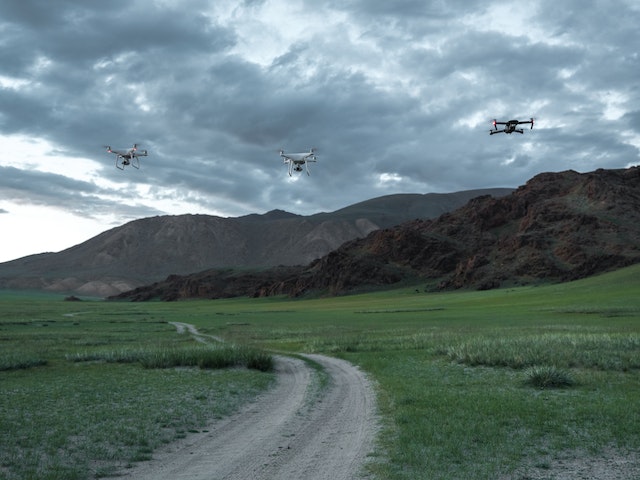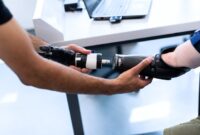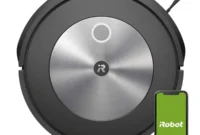Drones, also known as unmanned aerial vehicles (UAVs), have gained tremendous popularity in recent years. These small aircraft have become more accessible to the general public, enabling a wide range of applications such as aerial photography, surveying, and even package delivery. However, operating a drone comes with responsibilities, and ensuring safety should be a top priority for all drone pilots. In this essential drone safety guide, we will explore the necessary precautions and guidelines to fly a drone safely and responsibly.

1. Introduction
Drones have revolutionized various industries and provided new perspectives and capabilities that were once limited to professionals. However, the increasing number of drones in the skies has raised concerns regarding safety, privacy, and regulatory compliance. To address these concerns, it is crucial for drone pilots to familiarize themselves with the best practices and safety measures.
2. Understanding Drone Safety
What is a drone?
Drones are small aircraft that are remotely or autonomously controlled. They come in various sizes and types, ranging from consumer-grade drones used for recreational purposes to commercial drones with advanced features and capabilities.
Importance of drone safety
Ensuring drone safety is essential for several reasons. Firstly, it protects the well-being of people and property on the ground. Secondly, it prevents accidents, collisions, and potential damage to the drone itself. Additionally, adhering to safety guidelines helps maintain a positive image for the drone community and fosters responsible drone usage.
Regulatory guidelines and laws
Different countries and regions have specific regulations and laws regarding drone operation. It is crucial for drone pilots to be aware of and comply with these guidelines. Some common regulations include restrictions on flying in certain areas, altitude limitations, and the requirement to register drones above a certain weight.
3. Pre-flight Safety Checklist
Before taking off, it is essential to go through a pre-flight safety checklist to ensure your drone is in optimal condition and you have considered the surrounding environment and airspace regulations.
Checking drone condition
Inspecting the drone before each flight is vital to identify any physical damage or malfunctions. This includes checking the propellers, motors, battery connections, and any other components. It is important to follow the manufacturer’s instructions for maintenance and repairs.
Assessing the environment
Before flying, evaluate the environment for potential hazards such as power lines, trees, or people. Ensure there is enough open space to maneuver the drone safely, and avoid flying in inclement weather conditions such as strong winds or heavy rain.
Confirming airspace regulations
Check for any airspace restrictions or controlled airspace zones in the area where you plan to fly. Some regions have designated no-fly zones, such as airports or military installations. Utilize resources such as smartphone apps or websites that provide real-time airspace information to ensure compliance.
4. Flying Your Drone Safely
Once you have completed the pre-flight checklist and ensured the surrounding environment is suitable for flying, it’s time to take to the skies. Follow these safety tips while operating your drone:
Proper drone setup
Before taking off, make sure the drone’s firmware is up to date, the remote controller is calibrated, and the GPS signal is strong. Set up the camera settings if you plan to capture photos or videos, and always test the drone’s flight controls and responsiveness.
Maintaining visual line of sight
Maintaining a clear line of sight with your drone is crucial for safe operations. This means keeping the drone within your direct field of vision at all times, allowing you to monitor its position, altitude, and surroundings effectively.
Avoiding restricted areas
Respect any restricted areas or no-fly zones in your vicinity. Fly in authorized locations and obtain necessary permits or permissions if required. Be aware of temporary flight restrictions, such as those in place during major events or emergencies.
Monitoring battery life
Monitor the drone’s battery level throughout the flight to ensure you have enough power to safely return and land the drone. Most drones provide visual or audible warnings when the battery is running low. Plan your flights accordingly and avoid pushing the limits of your battery capacity.
Handling emergencies and malfunctions
In the event of an emergency or a drone malfunction, it is crucial to remain calm and take appropriate action. Familiarize yourself with the emergency procedures outlined in the drone’s manual, such as initiating an emergency landing or returning to the home point.
5. Privacy and Ethical Considerations
As a responsible drone pilot, it is important to consider privacy and ethical aspects while operating your drone.
Respecting privacy
Respect the privacy of individuals and avoid capturing or recording their personal activities without their consent. Be mindful of your surroundings and avoid flying your drone near private property or in areas where people have a reasonable expectation of privacy.
Obtaining necessary permissions
In certain situations, you may need to obtain permissions or permits before flying your drone. This can include flying in restricted airspace, conducting commercial operations, or capturing images or videos for commercial purposes. Research and comply with the local regulations and guidelines to ensure you are operating within the legal boundaries.
Being mindful of noise pollution
Drones can generate noise, especially during takeoff and landing. Consider the impact of noise pollution on the local community, wildlife, and sensitive areas. Avoid flying near residential areas or wildlife habitats, especially during quiet hours.
6. Post-flight Safety Measures
Once you have completed your drone flight, there are several post-flight safety measures to follow:
Battery handling and storage
Allow the drone’s battery to cool down before handling or charging it. Follow the manufacturer’s instructions for safe battery handling and storage. Store batteries in a fireproof and well-ventilated area, away from flammable materials.
Cleaning and maintenance
Regularly clean your drone to remove dirt, dust, and debris that may accumulate during flights. Inspect the propellers and other components for any signs of wear or damage. Follow the maintenance guidelines provided by the manufacturer to ensure optimal performance.
Data management and security
If your drone captures photos or videos, handle the data responsibly and consider privacy concerns. Store the data securely and delete any unnecessary or sensitive information. Be cautious when sharing drone footage online to avoid disclosing personal or private details.
7. Drone Safety Training and Education
To enhance your drone safety skills and knowledge, consider investing in training and education.
Importance of training
Drone safety training courses provide valuable insights into operating drones safely and efficiently. They cover topics such as flight maneuvers, emergency procedures, and understanding airspace regulations. Training helps you become a more proficient drone pilot and reduces the risk of accidents.
Available resources and courses
Numerous organizations, flight schools, and online platforms offer drone safety courses and resources. Research and enroll in reputable programs that align with your needs and goals. These courses often cover topics such as drone regulations, flight planning, emergency procedures, and advanced flying techniques.
Practice and proficiency
Becoming a skilled drone pilot requires practice and experience. Dedicate time to regular flight practice sessions in open areas to hone your piloting skills. Gradually challenge yourself with more complex flight scenarios, such as flying in different weather conditions or navigating obstacle courses.
8. Conclusion
Operating a drone can be an exhilarating experience, but it comes with responsibilities. Prioritizing safety is paramount to ensure the well-being of people, property, and the reputation of the drone community. By following the guidelines and best practices outlined in this essential drone safety guide, you can enjoy the benefits of drone technology while minimizing risks and promoting responsible drone usage.
FAQs
1. Do I need a license to fly a drone?
The requirement for a drone license varies depending on the country and the intended use of the drone. Some countries may require licenses for commercial drone operations or when flying drones above a certain weight. It is important to research and comply with the regulations specific to your location.
2. Can I fly my drone at night?
Flying a drone at night is subject to regulations and may require additional permissions or restrictions. Some countries prohibit night flights, while others allow it with proper lighting and authorization. Check your local regulations and follow the guidelines accordingly.
3. Are there any insurance requirements for drone pilots?
Insurance requirements for drone pilots can vary based on factors such as the type of drone, intended use, and local regulations. Commercial drone operators often need liability insurance to cover potential damages or accidents. It is advisable to consult with insurance providers specializing in drone coverage to ensure adequate protection.
4. Can I fly my drone in national parks?
Flying drones in national parks is generally restricted due to concerns over wildlife disturbance and visitor safety. However, regulations may vary between parks and countries. Check the specific rules and regulations of the national park you intend to visit to determine if drone flights are permitted.
5. How do I report a drone incident or violation?
If you witness a drone incident or suspect a violation of drone regulations, you can report it to the appropriate authorities. Contact your local aviation authority or law enforcement agency to provide them with the necessary details and evidence, if available.


